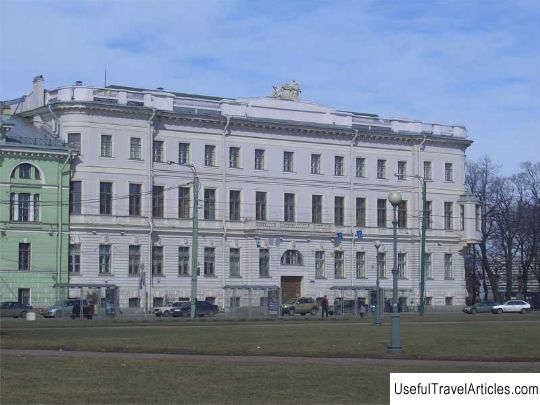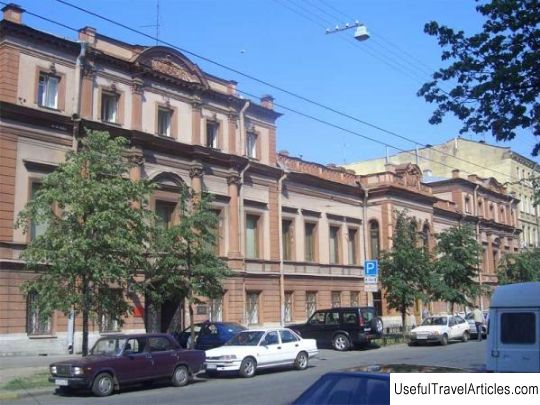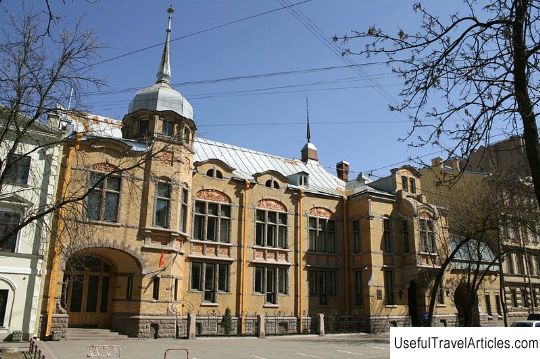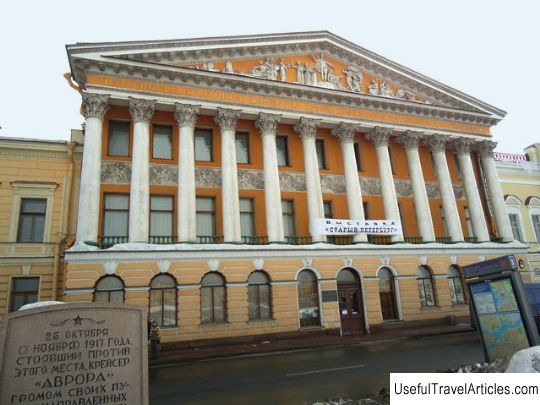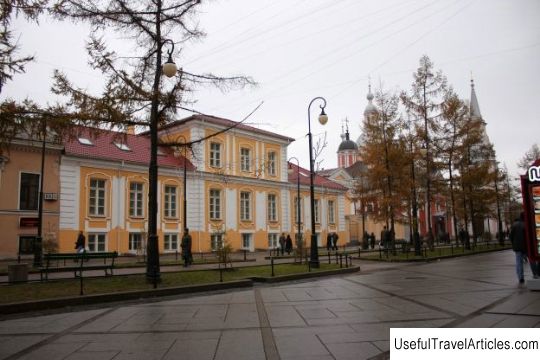Stieglitz mansion description and photos - Russia - Saint Petersburg: Saint Petersburg
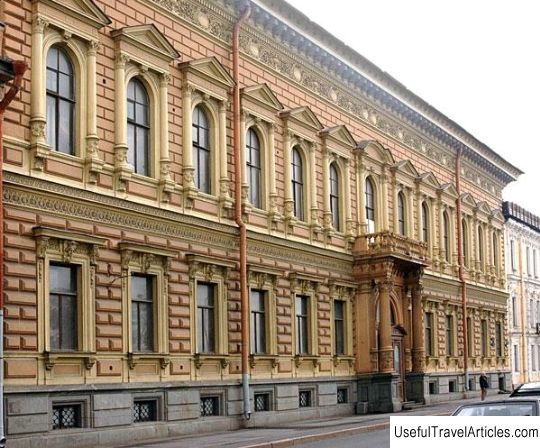
Stieglitz mansion description and photos - Russia - Saint Petersburg: Saint Petersburg. Detailed information about the attraction. Description, photos and a map showing the nearest significant objects. Photo and descriptionAmong the houses that end the English Embankment, one of the buildings stands out - the mansion of A.L. Stieglitz. The architect of the magnificent mansion is the architect Alexander Ivanovich Krakau, who managed to combine the walls of two residential buildings into a single building. One of these residential buildings was built at the beginning of the 18th century (in 1716) and it was the first stone building on the embankment. The house was erected by the ship master of the period of Peter the Great, Ivan Nemtsev. Following Ivan Nemtsev, the famous architect, Nemtsev's son-in-law, Savva Ivanovich Chevakinsky, became the owner of the house. The merchant Mikhail Serdyukov was the owner of another residential building (Serdyukov also built a system of water canals for the Vyshny Volochek). The mansion of Baron Stieglitz was tentatively erected in 1859-1862. Krakau managed to give a similarity to the facade of the mansion to some of the palaces of the Italian Renaissance. The facade of the building is divided into 2 floors, the first is finished with rustic materials, the walls of the second are plastered, the plaster imitates hewn stone. The window frames on the first floor are made in a simple, austere manner, with straight sandrids located above the window openings. The platbands of the mezzanine are made in the form of porticoes, made of columns standing on pedestals on the right and left of the windows and holding triangular pediments. The central part of the facade is emphasized by two columns, on the left and right sides of the entrance, forming a portico. A wide frieze decorated with molding completes the facade of the building. The interiors of the mansion are of particular artistic value. The main staircase of white marble can be especially distinguished among the interiors - for the depth of the compositional solution. The walls of the stairs at the height of the second floor are decorated with Corinthian pilasters. An arch decorated with columns serves as an exit from the side of the staircase. From the second floor landing, the door leads us into a room that overlooks the Neva. Next to this room, which was the reception room, there was a large, five-axis drawing room with caryatids. The living room, through three wide openings, was connected to the dance hall - the most spacious and spectacular room, which was decorated with Corinthian columns. Carving, gilded molding, damask drapery were widely used in the decoration of the mansion's interior decoration. The state rooms are harmoniously complemented by fireplaces decorated with sculptural elements, colored and white marble. Krakau placed sculptures of composers in the concert hall of the mansion, placing them in oval medallions, on the pads. Sketches for the panel "Four seasons" for interior decoration were made by the authority of Russian painting - Fyodor Antonovich Bruni. The architectural solution of the courtyard, made in the Baroque style, also had a certain artistic value. In the 30s and 40s of the XX century, the mansion underwent some restructuring - so, at first (in 1938-1939) a floor was added to the right courtyard wing, then (in 1946-1947) there was also another floor built over the Moorish Hall. The wood flooring was reinforced with metal beams in the post-war years. Baron Stieglitz, who owned the mansion, was one of the most successful businessmen in Russia in the 19th century. However, Alexander Ludvigovich was not only a businessman, but also an industrialist (and he also inherited manufactories and factories from his father), a financier, a benefactor. The memory of Baron Stieglitz remained not only in the form of a mansion. The State Art and Industry St. Petersburg Academy was founded on the money of Alexander Ludvigovich. A.L. Stieglitz sponsored the construction of the New Peterhof station, one of the first projects financed by Stieglitz was the construction of a railway between St. Petersburg and Moscow. Stieglitz deservedly received many of the highest awards of the Russian Empire, and in 2009 at the New Peterhof station, the baron a monument created by sculptors J.Ya. Neiman and S.P. One-shaft. The memory of Baron Stieglitz remained not only in the form of a mansion. The State Art and Industry St. Petersburg Academy was founded with the money of Alexander Ludvigovich. A.L. Stieglitz sponsored the construction of the New Peterhof station, one of the first projects financed by Stieglitz was the construction of a railway between St. Petersburg and Moscow.Stieglitz deservedly received many of the highest awards of the Russian Empire, and in 2009, at the New Peterhof station, the baron a monument created by sculptors J.Ya. Neiman and S.P. One-shaft. The memory of Baron Stieglitz remained not only in the form of a mansion. The State Art and Industry St. Petersburg Academy was founded on the money of Alexander Ludvigovich. A.L. Stieglitz sponsored the construction of the New Peterhof station, one of the first projects financed by Stieglitz was the construction of a railway between St. Petersburg and Moscow.Stieglitz deservedly received many of the highest awards of the Russian Empire, and in 2009 at the New Peterhof station, the baron a monument created by sculptors J.Ya. Neiman and S.P. One-shaft. financed by Stieglitz was the construction of a railway between St. Petersburg and Moscow.Stieglitz deservedly received many of the highest awards of the Russian Empire, and in 2009 at the New Peterhof station, a monument to the baron was unveiled, created by sculptors J.Ya. Neiman and S.P. One-shaft. financed by Stieglitz was the construction of a railway between St. Petersburg and Moscow.Stieglitz deservedly received many of the highest awards of the Russian Empire, and in 2009 at the New Peterhof station, a monument to the baron was unveiled, created by sculptors J.Ya. Neiman and S.P. One-shaft.     We also recommend reading Wat Phra Kaeo description and photos - Thailand: Chiang Rai Topic: Stieglitz mansion description and photos - Russia - Saint Petersburg: Saint Petersburg. |
